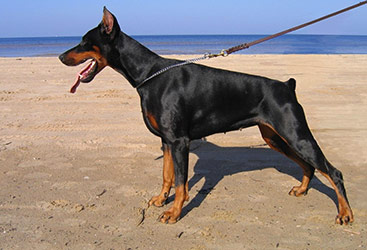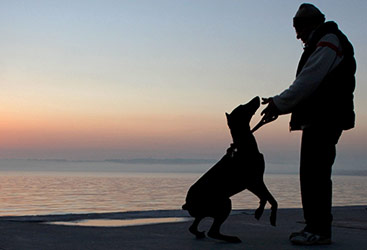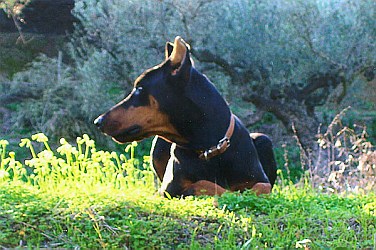Training

The value of a trained dog is undeniable compared to that of an untrained one regarding its usefulness and the ease in controlling the dog by its owner.
We offer basic training but also more specific lessons of body guarding and attack.
Training
During training, the dog learns the following 10 orders.
- HEEL The dog walks preferably, on the left side, without pulling the leash. It stops when the owner stops and starts when the owner starts walking.
- SIT The dog that is next to its owner, sits on its back legs.
- DOWN The dog sits down with its back legs bent and its front legs outstretched.
- STAY The dog remains in position ‘DOWN’ and the owner moves away from it to a distance of 15 m while always letting it see him.
- FALL The dog from position ‘DOWN’ lies down on its right side with the owner always next to it.

- COME The dog comes from a reasonable distance close to its owner (It is preferable to always give the dog a reward in the first months).
- JUMP The dog jumps over an obstacle, for example a ditch located in its way. Usually the owner goes over the same obstacle so they can continue their walk.
- UP The dog jumps to a logical level, for example a car trunk.
- IN The dog goes into its house or cage.
- REFUSE FOOD The dog does not eat food it finds on the ground or some stranger gives it.
Dog Training Videos
 |
 |

Training a dog by itself lasts 30 days. 10 more days of repeats follow with the dog’s owner present. In the end, after the owner takes his dog home, there are two more three-day courses where the dog returns to the training area in order to correct any mistakes that may occur.
Training Advices

- One person from the family gives the orders.
- The ten words that are used as orders are used only by the person in charge of giving the dog orders and are always followed by their execution.
- Never and for no reason must any friend or relative use the order words.
- The owner takes his dog for a walk always on a leash.
- The owner takes the dog for a walk in deserted areas in the beginning and when it has learnt to obey orders, it can be taken to busier areas.
- We never stand in front of a dog and give orders when it is tied or in its cage.
- It is best to take the dog for a walk without feeding it before. When you return home, put its food in its house and give the order “IN”.
- On a day that you are not feeling well, do not take the dog for a walk. You will soon transfer your bad mood and it will be expressed by disobedience.
- Never give an order to the dog that will cause it to get hurt, extremely scared or very threatened. The dog will never execute the order again.
- At least three times during the week, the dog must repeat the orders or else it will begin to forget them.
- Do not forget that dogs are not robots. They do not all learn as well or as fast. Each dog needs its own time and effort.
- A walk with the owner is not only about executing orders, it is also for playing games and free time for the dog to have fun.


